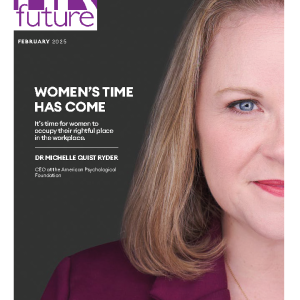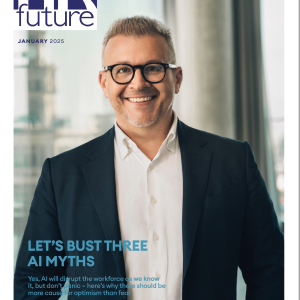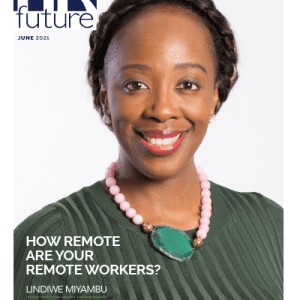The future of work is no longer something we’re preparing for—it’s here. As businesses across every sector adapt to technological advancements, shifting employee expectations, and evolving business models, Human Resources (HR) must rethink traditional hiring and development strategies. One key trend driving this evolution is the rise of skills-based hiring.
Historically, organizations have relied on degrees, titles, and years of experience to evaluate candidates. But as roles become more hybrid, digital-first, and cross-functional, these markers no longer reflect the competencies required to succeed. This shift is forcing HR leaders to reconsider what truly matters: not where a person has been, but what they can do.
Whether you’re hiring a software engineer, a marketing manager, or even a Land Rover specialist with complex diagnostic expertise, the conversation needs to move beyond credentials to focus on skills, adaptability, and mindset.
1. What Is Skills-Based Hiring—and Why Does It Matter?
Skills-based hiring is the practice of evaluating and hiring candidates based on their demonstrable abilities, rather than on formal qualifications alone. This approach recognizes that:
- Talent exists outside traditional career paths
- Many skills are transferable across roles and industries
- Lifelong learning and agility are more important than static resumes
A 2023 report from the World Economic Forum highlighted that 50% of all employees will need reskilling by 2027, with a growing number of employers prioritizing capabilities like critical thinking, creativity, and emotional intelligence over traditional credentials.
For HR, this requires a seismic shift in how job descriptions are written, how interviews are conducted, and how internal mobility is managed.
2. Benefits of a Skills-Based Approach
a) Expands the Talent Pool
By removing unnecessary degree requirements or arbitrary experience thresholds, organizations can access more diverse candidates—including career changers, self-taught professionals, and those from non-traditional backgrounds.
b) Drives Equity and Inclusion
Rigid qualification filters often exclude underrepresented groups. Skills-based hiring helps reduce bias by focusing on potential rather than pedigree, supporting stronger DEI outcomes.
c) Boosts Agility
Organizations that understand the skills within their workforce can redeploy talent quickly, fill emerging gaps, and stay competitive in fast-changing markets.
3. How to Implement Skills-Based Hiring in Your HR Strategy
a) Redesign Job Descriptions
Start by auditing current job postings. Remove outdated degree or experience requirements unless they are truly essential. Instead, list core competencies and technical or soft skills tied to business outcomes.
For example, instead of “Bachelor’s degree in automotive engineering and 5+ years at a dealership,” a posting for a Land Rover specialist Kent might highlight diagnostic skills, experience with complex mechanical systems, and proficiency with brand-specific tools and technologies.
b) Use Competency-Based Interviewing
Replace subjective or resume-based questions with structured interviews that ask candidates to demonstrate how they’ve used the required skills. Include situational judgment scenarios or technical assessments.
c) Invest in Skills Mapping
Utilize HR technology platforms to map out existing skills within your workforce. This helps identify internal talent for open roles and highlights upskilling opportunities. Tools from platforms like Workday, Degreed, and LinkedIn Learning can assist in this process.
d) Focus on Learning & Development
Create internal training programs that align with skill gaps. Encourage a culture of continuous learning with micro-credentials, internal gigs, and cross-training.
4. Case Study: How One Company Broke the Mold
Consider a mid-sized tech company that removed degree requirements from 70% of its job postings. Instead, it introduced a skills-first hiring model and invested in digital assessments to gauge real-world capabilities.
The result?
- Applications from underrepresented groups increased by 40%
- Time-to-hire dropped by 25%
- Employee performance and retention improved year-over-year
Their HR team also introduced an internal talent marketplace, allowing employees to “apply” for projects based on skill, not title. This approach kept top performers engaged and provided development opportunities without relying solely on promotions.
5. Challenges HR Must Address
While the benefits are clear, implementing skills-based hiring is not without hurdles:
- Hiring manager resistance: Long-held beliefs about “ideal” candidates can be hard to shake. HR must train managers to assess competencies rather than credentials.
- Assessment accuracy: Measuring soft skills like collaboration or adaptability can be subjective. Robust, validated tools are essential.
- Infrastructure gaps: Legacy HR systems may not support granular skills tracking or personalized learning paths. Upgrading technology is key.
To succeed, HR must position itself as both change agent and enabler—helping business leaders understand the “why” behind the shift and giving them the tools to act on it.
6. The Future of Talent Management Is Fluid
A skills-based mindset doesn’t stop at hiring. It transforms how organizations:
- Develop and retain talent
- Identify high-potential individuals
- Build diverse leadership pipelines
- Prepare for disruption and innovation
In this new paradigm, HR shifts from being gatekeepers of job titles to architects of opportunity. Employees are no longer slotted into fixed roles—they are seen as collections of capabilities, ready to grow, evolve, and contribute in dynamic ways.
As the Gartner Talent Neuron research suggests, skills now have a shelf life of less than five years. The organizations that win will be those that continuously refresh and reapply their workforce’s capabilities to meet changing demands.
Final Thoughts: What HR Leaders Can Do Now
- Audit Your Current Practices: Are degree requirements truly necessary? Are job ads unintentionally exclusionary?
- Start Small: Pilot a skills-based hiring approach in one department or job family and measure the impact.
- Educate Stakeholders: Train recruiters and hiring managers to evaluate candidates differently.
- Leverage HR Tech: Use tools that enable skills assessment, mapping, and development planning.
- Champion Learning: Encourage a growth mindset across the organization and reward internal mobility.
HR leaders are at a turning point. The shift toward a more flexible, inclusive, and capability-driven workforce is already underway. It’s time to embrace it.
Whether your next hire is an AI engineer, a customer success lead, or a Land Rover specialist with hands-on expertise, one thing is certain: what they can do matters more than what’s printed on their CV.
Alex Taylor is a future-of-work consultant specializing in talent strategy, skills-based hiring, and workforce transformation.


























